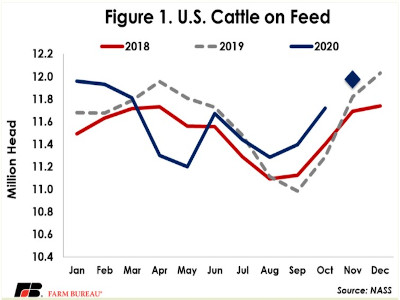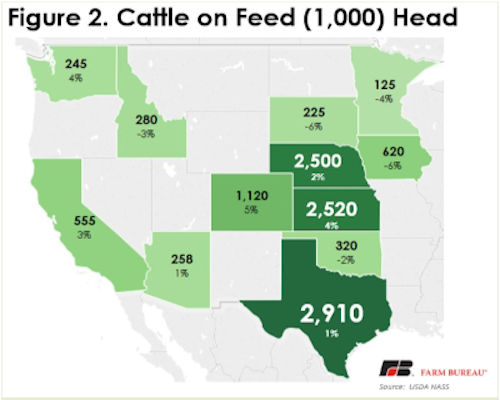USDA’s latest Cattle on Feed report, released November 20, shows the number of animals on feed as of November 1 is higher than it was this time last year. The report provides monthly estimates of the number of cattle being fed for slaughter. For the report, USDA surveys feedlots of 1,000 head or more, as this represents 85% of all fed cattle. Cattle feeders provide data on inventory, placements, marketings and other disappearance.
November Cattle on Feed Report
This report showed a total inventory of 11.973 million head for the United States on November 1, up from 2019 and from last month. This 1.3% year-over-year increase is slightly below analysts’ expectations of an average increase of 1.8% in feedlot inventories, but still within the expected range. Large monthly carryover inventories helped to offset the drop in placements and pushed cattle on feed up 157,000 head over last year, making this the highest November inventory since the series began in 1996. Typically, November continues the fall buildup of animals after September lows, and it looks as if we are seeing this seasonality play out. After strong impacts from the pandemic in April and May, the number of cattle on feed has largely followed seasonal patterns, but since August has been running above recent years’ levels.

As usual, Texas, Kansas and Nebraska led the way in total fed cattle numbers, accounting for over 7.8 million head, or approximately 65% of the total on-feed inventory in the country. Texas continued to gain year-over-year, adding 1% relative to 2019. Kansas and Nebraska saw moderately greater gains, adding 4% and 2%, respectively.
